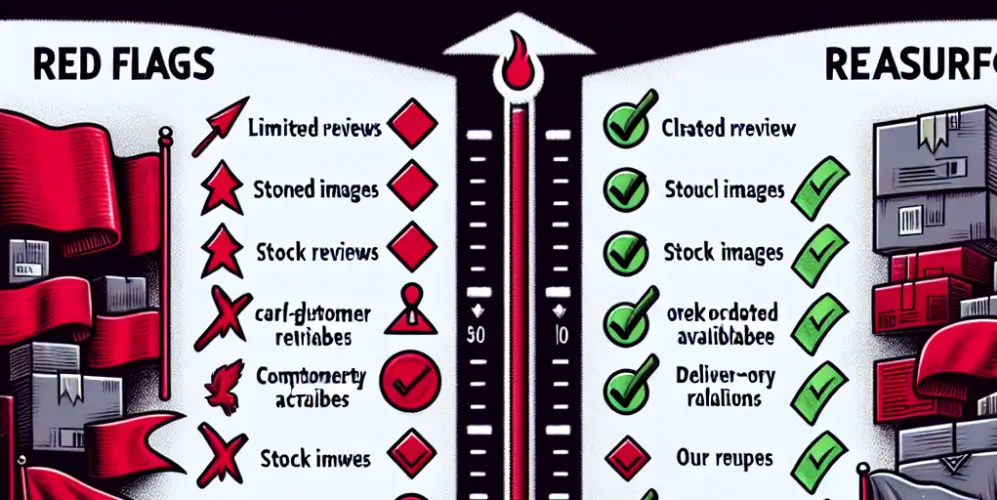I assess the Amazon landscape with a critical eye. Knowing the difference between digital products sold directly by Amazon and those from a third-party seller is my starting point. Amazon, as a retailer, often offers products that they source and sell themselves; these are typically tagged as ‘Shipped from and sold by Amazon.com’.
When I explore Amazon, I also look for official brand stores. These are dedicated spaces for a specific brand. An authentic brand store on Amazon adds a layer of trust, signaling that the products are genuine and supplied by the brand or authorized resellers.
The A-to-Z Guarantee safeguards my purchases on Amazon. It’s a reassurance policy in my back pocket, helping me feel safe with my transactions. It means if there’s a problem, Amazon has a resolution process in place.
Customer feedback is a tool I trust. Scanning through customer reviews and ratings gives me a snapshot of other buyers’ experiences. High ratings and detailed, positive reviews often indicate a product’s validity.
It’s crucial to acquaint with these aspects of the Amazon marketplace. They lay the groundwork for making informed decisions about product authenticity. As I move on to examining product listings more closely, these fundamentals equip one with a keen sense of what to look for.
Analyzing Product Listings: Red Flags and Reassurances

When shopping online, a product’s legitimacy often hinges on the details presented in the listing. Authentic items typically feature high-quality, detailed images. These visuals should be clear enough to verify key aspects of the product, such as logos, trademarks, and relevant manufacturing details. If a listing uses vague or watermarked images taken from other sites or simply has a lack of visuals, consider this a potential warning sign.
Equally crucial to evaluating listings is assessing the accuracy and completeness of the product description. Authentic digital products usually have thorough descriptions that list specifications, features, and even the origin of the product. Carefully crafted language that provides all the necessary detail suggests an attention to consumer needs and product legitimacy.
A worthwhile step is evaluating the seller’s profile. Look at how long the seller has been active, their customer feedback, and their overall ratings. Consistently positive feedback and a long-standing presence give confidence in authenticity. Conversely, be wary of new accounts with little to no history or an abundance of negative reviews focusing on the legitimacy of their goods.
In some cases, pricing can serve as an authenticity clue. If a deal seems significantly less expensive than anywhere else, it might be counterfeit. While everyone loves a good deal, prices that are drastically lower than the manufacturer’s listed price should raise an eyebrow and warrant further investigation.
Lastly, don’t overlook customer reviews and the Questions & Answers section. These areas can provide unfiltered insights into the product’s authenticity. Look beyond star ratings; read the content of the reviews. Authentic products will have a pattern of satisfied customers, while counterfeits might have a trail of dissatisfied buyers who comment on the poor quality or false advertising.
Communication can bridge gaps

Amazon isn’t just a marketplace; it’s a tool-rich platform designed to assist you in making informed purchases. Familiarizing yourself with its features is key to weeding out inauthentic products. Amazon’s Brand Registry and Transparency programs are prime examples, created specifically to protect brands and consumers alike.
Serial numbers and warranty claims are not there just for the after-purchase stage. Use these features proactively. Verify products through serial number checks when available, and confirm that warranties offered are valid and in line with the brand’s policies.
Communication can bridge gaps in information. If you ever feel uncertain, a simple message to the seller asking for additional details or verification can clarify many doubts. Genuine sellers are typically responsive and transparent.
Your role in the Amazon ecosystem doesn’t end at purchase. If you come across a listing that raises suspicion, report it. This helps maintain the integrity of the marketplace and protects other consumers from potential scams.
In your quest for authenticity, remember that Amazon is a platform that evolves with the e-commerce landscape, continually adding safeguards. Stay updated on the latest digital features and best practices to shield yourself from counterfeit products.



